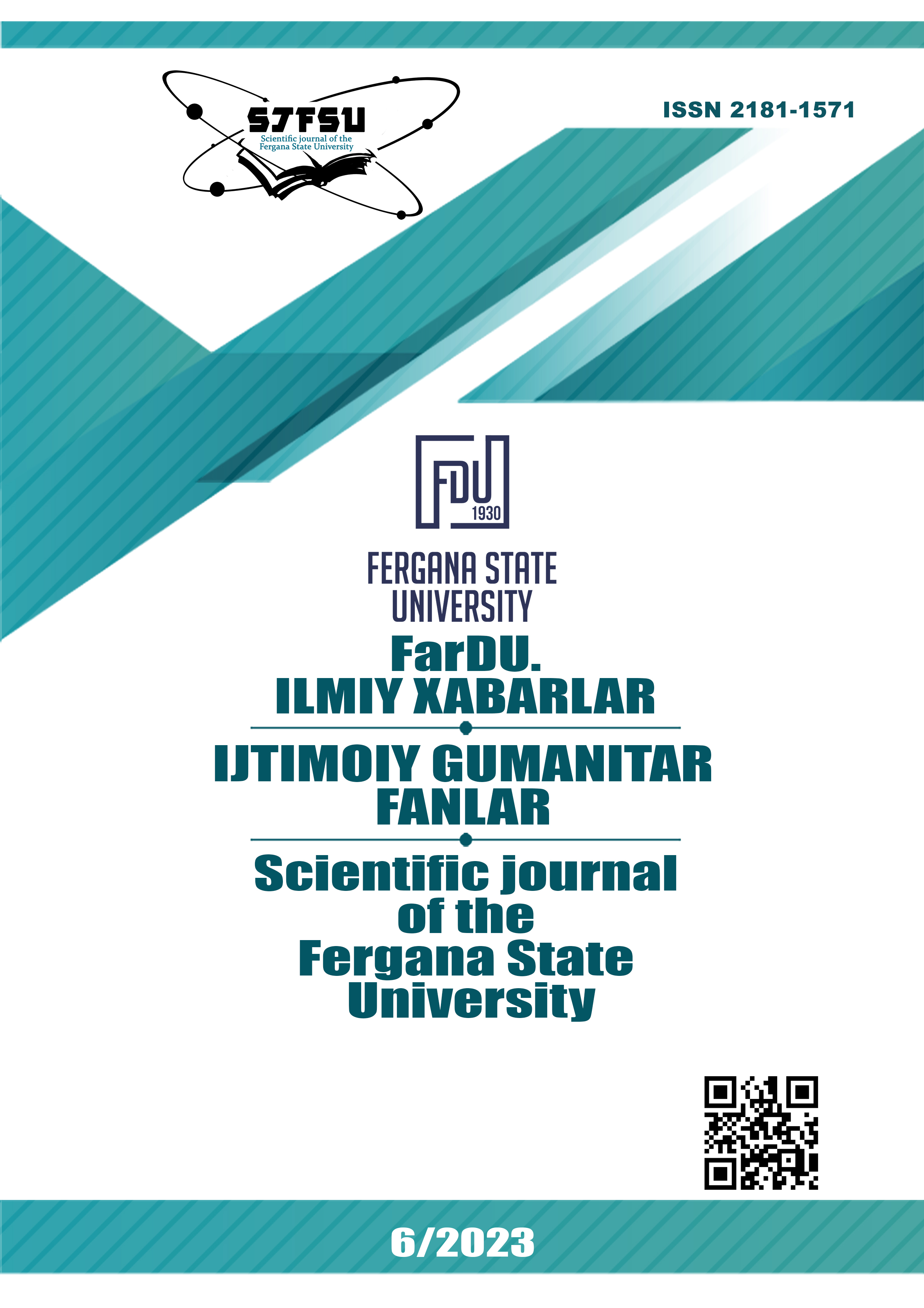REPORT OF 2014 ARCHAEOLOGICAL FIELD RESEARCH IN THE SOUTHERN PART OF THE SAMARKAND VALLEY OF UZBEKISTAN
Keywords:
Sazagan; Zinak; nomadic; settlementAbstract
The Samarkand Basin, located at the western end of the Western Tianshan Mountains, is surrounded by lush
water and grass. Since the Bronze Age, many nomadic peoples, such as the Sezhong, Sarmatians, Da Yuezhi, and
Shuhuang, have been active and pastoral here. From April to May 2014, a joint archaeological team composed of the
Silk Road Cultural Relics Conservation and Archeology Research Center of Northwest University in China and the
Institute of Archeology of the Academy of Sciences of the Republic of Uzbekistan conducted an archaeological survey of
the ancient nomadic remains on the southern edge of the Samarkand Basin. Two large-scale nomadic settlement sites in
Sazagan and Znak were confirmed and investigated, and a large number of tombs, residences, roads and other remains
of different periods, types and sizes were discovered. Combining previous archaeological research results, an attempt
was made to explore the age, cultural relic attributes, settlement form and hierarchy of the two sites.
References
Sakov A I. Sarazm: An Agricultural Center of Ancient Sogdiana. The Archaeology and Art of Central Asia
Studies From the Former Soviet Union, 1994, 8: 1-12.
Masson V M. The Bronze Age in Khorasan and Transoxania. History of Civilizations of Central Asia, Vol. I,
UNESCO, 1992: 232-244.
Mallory J P. Tazabagyab Culture. Encyclopedia of Indo-European Culture, 1997: 566-567.
Rondelli B, Tosi M. CIS and Silk Road studies: Monitoring landscape and population changes at Samarkand and
in the Middle Zeravshan Valley. Reading Historical Spatial Information from around the World: Studies of Culture and
Civilization based on Geographical Information Systems Data, 2006:459-489.
Obel’fchenko О V. Agaliksaiskie Kurgani. Istorija material’ fnojkul’ ftury Uzbekistana, 1972, 9: 56-72.
Obel’fchenko О V. Sazaganskie Kurgani. Istorija material’ fnojkul’ ftury Uzbekistana, 1966,7: 66-80.
ObeF fchenko О V. Moghilnik Ak-djar tepa. Istorija material ’ fnojkul’ ftury Uzbekistana, 1962, 3: 57-70.
Simone Mantellini. “Dwelling dynamics, territory exploitation, and trade routes in the ancient Samarkand oasis
(Uzbekistan)” , Archeologia delle "Vie della Seta ”: Percorsi, Immagini e Cultura Materiale II Ciclo di Conferenze, 2013: 41-
Bonora G L, et al. Carta Archeologica della Media Valle dello Zeravshan: aspetti diversificati per una
comprensione diacronica del popolamento antico. Missione Archeologica Italo-Uzbeka a Samarcanda: campagna 2002,
OCNUS: Rivista della Scuola di Specializzazione in Archeologia, 2003,11: 35-63.
Tosi M, Berdimuradov A, Franceschini F, et al. La Carta Archeologica Della Media Valle Dello Zeravshan:
Stradtegie e Metodi Per La Storia Del Popolamennto Nella reginoe Di Samarcanda. //The Role of Samarkand in the History
of World Civilization: Materials of the International Scientific Symposium devoted to the 2750th Anniversary of the City of
Samarkand.Tashkent-Samarkand: Fan, 2007: 68-73.
Б.А.Литвинский, Древние Кочевники Крыши Мира. Москва: НАУКА, 1972.
Исаков А И. Богатое женское погребение из Саразма: 64-70.
Исаков А И. Потемкина Т М. Могильник плохи эпохи ъроны в Таджикистане: 145-167.
Археологическая карта памятников самаркандской области, Том 2. Ташкент 2010: 271.
马健, 王建新, 赵汗 青等: 《 新疆巴里 坤石人子沟遗址F 2 发掘报告 》 , 《 考古与文物 》 2 0 1 4 年第 5
期 , 第 3-14 页; 王建新 、 张凤 、 任萌 等 : 《 新疆巴里坤 县东黑 沟遗址 2 0 0 6  ̄ 2 0 0 7 年 发掘简报 》 , 《 考古 》 2 0
9 年第 1 期 , 第 3 — 2 7 页
Downloads
Published
Issue
Section
License
Copyright (c) 2024 Scientific journal of the Fergana State University

This work is licensed under a Creative Commons Attribution-NonCommercial-NoDerivatives 4.0 International License.

